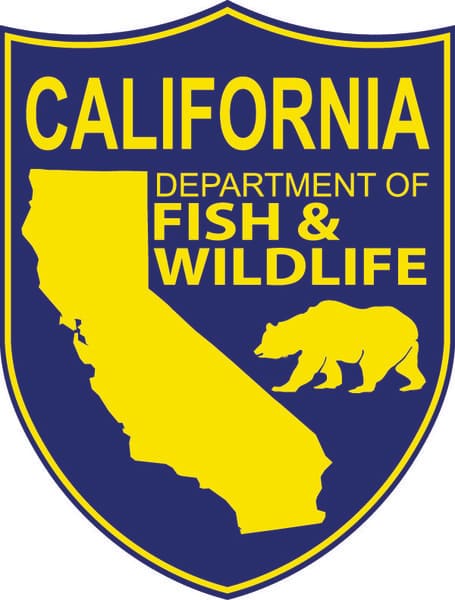California Outdoors Q&As: How Much Fishing Until Boat Limits Apply?

How Much Fishing Until Boat Limits Apply?
Question: I heard this question asked on the radio last season while fishing for salmon in Monterey. The answers from mostly experienced and knowledgeable anglers were mixed. No one seemed to be certain. So here’s the situation:
Two anglers, both legally licensed, one rod trolling per angler, barbless hooks, one lure per line. The anglers take turns hooking up and fighting the fish. Soon they have three legal salmon on the boat. One angler has a limit, and the other angler needs one more and wants to catch his own. The question: Can the two anglers continue trolling with the two rods out?
My reading of the ocean regs is yes, they can, because there is nothing in the regs saying the angler with a limit must stop fishing while the boat/anglers are not over limit. If the next one to hook a fish was to fill the boat limit, then the angler with the limit would not be able to even touch the rod. However, since catch and release fishing is not prohibited, both can continue to fish until the last fish is netted. Do you agree? (Dave R.)
Answer: Yes, boat limits apply. Boat limit: When two or more persons that are licensed or otherwise authorized to sport fish in ocean waters off California or in the San Francisco Bay District … are angling for finfish aboard a vessel in these waters, fishing by all authorized persons aboard may continue until boat limits of finfish are taken and possessed aboard the vessel (California Code of Regulations (CCR) Title 14, section 27.60 (c )).
How to become a Hunter Ed Instructor (HEI)?
Question: How can I sign up to become a Hunter Education Instructor?
Answer: Applicants must meet the following requirements:
• Be at least 18 years of age
• Successfully complete the hunter education course prior to submitting an application
• No felony convictions
• Completed a course of study prior to taking a supervised examination covering the basic topics of hunter education
The testing process to become a certified instructor takes about two hours and applicants must score a minimum of 80 percent. After passing the exam, the volunteer will take an oath and work with an experienced instructor before leading their own class.
To retain current HEI certification, an instructor must teach one class per year and attend one conference. More information on the requirements can be found at www.dfg.ca.gov/huntered, or speak with one of our wildlife officers at the upcoming Fred Hall Shows in either Long Beach or Del Mar.
Lobster report card for two different types of traps
Question: If I am fishing with both flat and rigid types of hoop nets in one set, do I need to fill out two lines on my lobster report card (e.g. one line with a gear code for flat and one line for the non folding type?) (Dixon C.)
Answer: Yes. According to California Department of Fish and Wildlife (CDFW) Environmental Scientist Travis Buck, instruction 2 on the lobster report card says “make a separate entry for each location fished and each type of gear used.” You’ll see under gear codes that flat hoop nets are gear #1 and rigid hoop nets are gear #2. So create separate lines for each type of net, and record the corresponding number of lobsters retained for each type of net. Thank you for paying attention to this detail!
Also, hunters and anglers are now being offered the ability to report harvest data online at: www.dfg.ca.gov/licensing/harvestreporting/. This means you will be able to enter your 2012 lobster report card data online beginning Jan. 1, 2013. Remember that report card information is due by Jan. 31. Thanks and good luck lobster fishing.
Importing USDA processed black bear meat?
Question: Can I bring USDA processed black bear meat into California from Colorado and Nevada from USDA plants to sell here locally? (Anshu P.)
Answer: No, California Fish and Game law prohibits the sale of the pieces or parts of any bear in California, and it makes no difference if the item was a bear that was killed in California or in another state and imported into the state. (See Fish and Game Code, section 4758.)

